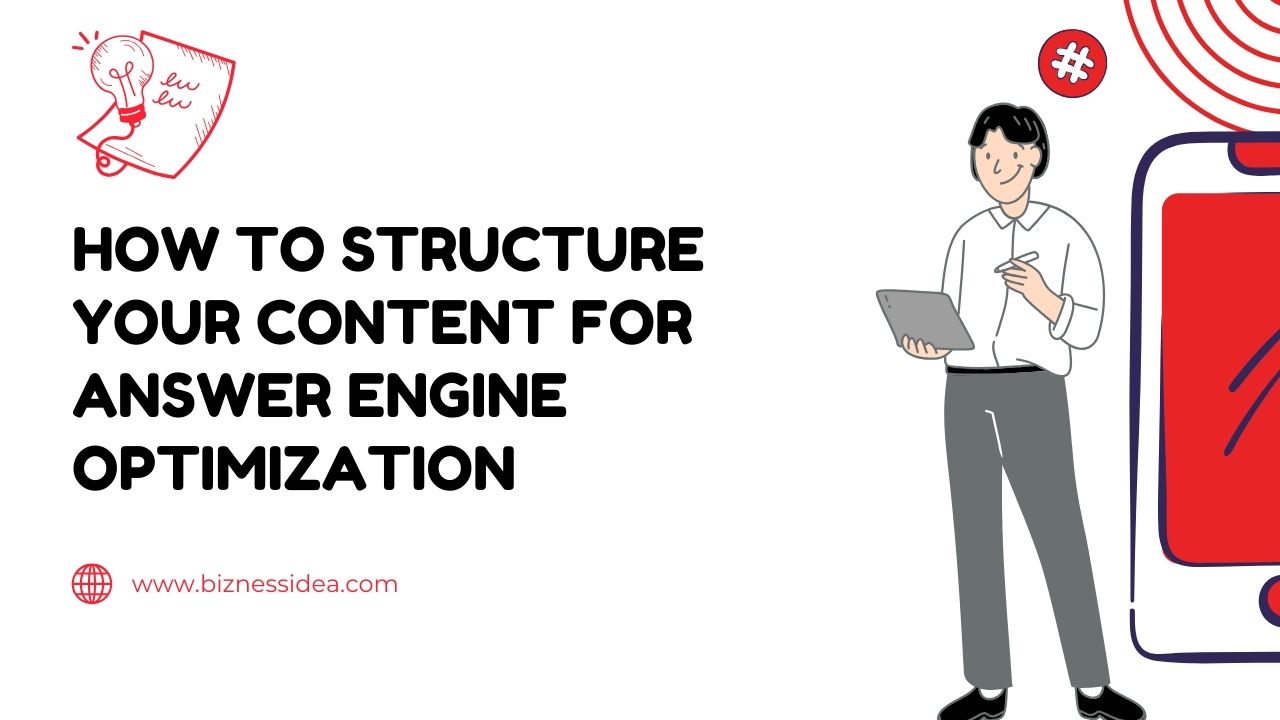Search engines are shifting toward AI-powered answers, making Answer Engine Optimization (AEO) the future of digital visibility. Unlike traditional SEO, which focuses on ranking websites on search engine results pages (SERPs), AEO ensures that your content is structured so AI assistants, Google’s Search Generative Experience (SGE), Bing Copilot, and ChatGPT can extract and deliver it directly as conversational answers. In 2025, brands that master AEO will dominate user attention because people increasingly want instant responses, not lists of links. This blog explores the meaning of AEO, its growing importance, content structuring techniques, common mistakes, and future predictions.
What is Answer Engine Optimization (AEO)?
Answer Engine Optimization (AEO) is the practice of creating content that is clear, structured, and contextually rich so that AI-powered search engines can easily interpret and present it as direct answers to user queries. Unlike SEO, which focuses on keyword density, backlinks, and ranking factors, AEO emphasizes conversational clarity and intent-driven responses. For example, when someone searches “What is AEO?”, instead of browsing multiple pages, an AI assistant should provide a crisp, accurate definition directly. Technologies like ChatGPT, Google AI Mode, and Microsoft Copilot rely heavily on AEO-friendly content. Therefore, AEO is becoming the natural evolution of SEO in an AI-first search ecosystem.
Why is Answer Engine Optimization Important in 2025?
The rise of AI-powered search is changing how information is discovered, making Answer Engine Optimization (AEO) vital for all businesses in 2025. Users now prefer conversational engines that provide immediate solutions rather than browsing endless results. If your content is not optimized for AEO, even high-ranking SEO pages risk invisibility because AI models might bypass them in favor of direct, structured answers from competitors. By adopting AEO, businesses not only secure better visibility but also build trust as authoritative sources. In today’s answer-first digital world, ignoring AEO is equivalent to ignoring search traffic itself, making it an unavoidable priority.
Key Elements of Content Structure for AEO
Optimize for Search Intent & Questions
AEO begins with understanding user intent. Most people now search in the form of natural language queries, such as “How do I optimize my content for AEO?” or “Why is AEO important in 2025?” Structuring your content around these question-based formats makes it easier for AI search engines to select your answers. To achieve this, use conversational long-tail keywords that mimic how people actually speak, rather than focusing only on short phrases. By prioritizing search intent, businesses can deliver more meaningful content that matches exactly what users expect, thereby increasing their visibility in AI-driven search results.
Clear and Concise Answers
When optimizing for Answer Engine Optimization, clarity is the golden rule. AI-powered search engines prefer short, precise, and contextually rich answers that can be extracted directly. The most effective way to achieve this is to start with a direct, one-sentence answer to the question, followed by supporting details in the same paragraph. For example, if asked, “What is AEO?”, your response should immediately define it, then explain how it relates to AI-powered search. This approach ensures your content is both human-friendly and AI-friendly, positioning your business as a reliable authority for instant answers in conversational engines.
Structured Data and Schema Markup
Structured data plays a critical role in helping AI engines understand your content. By implementing schema markup, you give search engines clear signals about the context of your content. For instance, the FAQ schema highlights common questions and answers, while the HowTo schema works well for step-by-step guides. Schema ensures that AI-powered engines like Google’s AI Mode can pull direct answers confidently. Without a schema, content may lack clarity for algorithms, reducing its chances of being featured in AI snippets. Therefore, structured data is a fundamental building block of Answer Engine Optimization, bridging human-friendly writing with machine readability.
Content Formatting for Readability
Formatting is not just for humans—it is crucial for AI engines too. Well-structured content with clear H2 and H3 headings, short paragraphs, and logical flow helps conversational search engines identify and extract answers more easily. Using numbered lists or bullet points within explanations improves readability, but each section must remain conversational and intent-driven. For example, instead of burying key insights in large blocks of text, break them into smaller, scannable paragraphs. Readability also enhances user engagement, reducing bounce rates, which indirectly supports SEO and AEO success. In short, good formatting ensures your content appeals to both people and machines.
SEO Techniques to Enhance Answer Engine Optimization Results
Use Conversational Keyword
One of the most powerful ways to optimize for AEO is by integrating conversational keywords into your content. Instead of targeting a rigid keyword like “best SEO tools,” frame it as a question: “What are the best SEO tools in 2025?” Such natural, question-based phrasing reflects how users interact with AI assistants and voice search. By answering conversational queries directly, your content aligns perfectly with AI-driven search algorithms. This technique ensures that your content is discoverable in both traditional search and answer engines, making it a dual-purpose optimization strategy that future-proofs your digital visibility.
Leverage Featured Snippets & People Also Ask (PAA)
Featured snippets and Google’s “People Also Ask” sections are prime real estate for Answer Engine Optimization. These sections act as training material for AI engines, which often pull answers directly from them. To capture this space, structure your content to provide 40–60-word concise answers to common questions, followed by detailed explanations. Using tools like AnswerThePublic, SEMrush, or Google’s PAA boxes can help identify trending queries. By directly addressing these questions in your content, you improve your chances of being featured in snippets, thereby increasing visibility not only in SERPs but also in AI-powered conversational search.
Optimize for Voice Search
The growth of voice search is closely linked to AEO, as most voice queries are conversational and question-based. Users typically ask questions like, “Hey Google, how do I optimize content for answer engines?” To rank in such scenarios, your content must be conversational, clear, and directly answerable. Including long-tail, natural-speech keywords increases the likelihood of your content being selected for voice results. Optimizing for voice search, therefore complements AEO efforts, ensuring your brand remains visible across multiple search platforms—text, AI-driven responses, and voice assistants—giving you a well-rounded digital presence in 2025.
Common Mistakes to Avoid in Answer Engine Optimization Content
One of the biggest mistakes businesses make with Answer Engine Optimization is treating it like traditional SEO. Overstuffing keywords without providing clear answers confuses AI engines and reduces visibility. Another common error is ignoring structured data, which limits your chances of being understood by conversational engines. Long, vague, or overly complex content also performs poorly, as AI assistants prefer concise, answer-oriented formats. Many businesses also skip creating FAQ sections, missing out on a valuable optimization opportunity. Avoiding these mistakes ensures that your content remains relevant, structured, and answer-ready, increasing the likelihood of being featured in AI-powered responses.
Best Practices for Structuring Content for Answer Engine Optimization
Keep it Conversational
AEO thrives on content that mimics natural conversation. Instead of writing in a rigid, academic tone, frame your content as if you are directly answering a user’s question. This approach not only helps AI engines parse your content effectively but also makes it more engaging for readers. For example, when explaining technical concepts, simplify the language and avoid jargon. By writing in a conversational style, you increase both readability and the chances of your content being selected for conversational AI snippets, voice search, and Google’s AI Overviews, giving you an edge over traditional SEO content.
Create FAQ Sections
FAQs are a powerful tool in Answer Engine Optimization, as they directly align with how users and AI assistants seek information. By creating a well-structured FAQ section on each page, you increase the chances of your content being pulled into AI snippets. Each question should be followed by a short, clear answer, ideally under 60 words, and then expanded upon in supporting paragraphs. Using the FAQ schema further strengthens the visibility of these answers. This structured approach makes it easier for AI engines to extract, understand, and deliver your content as trusted answers in conversational search environments.
Add Supporting Content (Videos, Case Studies, Examples)
Supporting content like videos, case studies, infographics, and real-life examples enhances the value of your AEO strategy. AI engines prioritize authoritative and comprehensive content, so including diverse formats gives your brand more credibility. For example, a video tutorial explaining “How to implement schema markup for AEO” can complement your written explanation, while case studies provide real-world validation. These supporting elements not only help with user engagement but also give AI models richer context to draw from. By integrating multimedia, you make your content more versatile, answer-ready, and competitive in the AI-driven search landscape of 2025.
Future of Answer Engine Optimization
The future of Answer Engine Optimization lies at the intersection of AI, automation, and personalized search experiences. With Google’s AI Mode, ChatGPT’s integrated search, and Microsoft’s Copilot advancing rapidly, AEO will become the foundation of content marketing. In the next few years, AI engines will prioritize context-driven, multimedia-rich, and intent-first content over keyword-heavy strategies. Businesses that adopt AEO early will dominate this new landscape, while those clinging to old SEO tactics will fade into irrelevance. As AI-driven discovery expands across devices, voice, and chat interfaces, AEO will transform from an option into a necessity for digital visibility.
Conclusion
In 2025, Answer Engine Optimization is no longer a trend but a necessity. By focusing on clear answers, structured data, conversational keywords, and FAQ-based formats, businesses can ensure their content is visible in AI-powered search. Avoiding common mistakes like keyword stuffing or ignoring schema is equally important. AEO not only improves search visibility but also establishes trust and authority in the eyes of both users and AI systems. The future belongs to businesses that understand intent, structure content effectively, and embrace conversational optimization. For brands, mastering AEO today is the key to staying relevant tomorrow.













